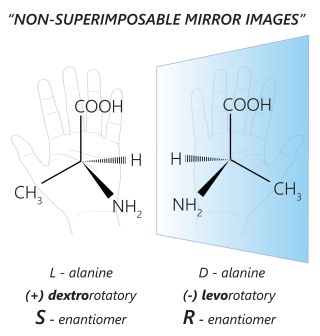ADHD
Substituting ADHD Medications During the Stimulant Shortage
What to do when you can't find your medication.
Posted November 12, 2023 Reviewed by Jessica Schrader
Key points
- The ADHD stimulant medication shortage is continuing.
- Understanding ADHD medications can help you make rational choices if your current medication is unavailable.
- There are actually a lot of choices out there for patients.
The stimulant shortage is continuing for the foreseeable future. Many people who are on ADHD stimulant medications are still having a hard time finding them.
Whether you can find a medication is different in different areas of the country, and varies from pharmacy to pharmacy. If you are on a particular medication, then sometimes your pharmacy may have it and sometimes you have to "call around." We have written about the origin of the stimulant crisis and potential solutions. We are currently accepting it as a fact of life; another hurdle or obstacle to surmount. So here's a very practical guide as to what to do if you can't find your medication.
First, and briefly, here's how to understand FDA-approved ADHD medications. They can all be divided into two categories: stimulants (Ritalin and Adderall type medications), and nonstimulants (Strattera, Qelbree, and Intuniv, primarily). Stimulants are used about 95 percent of the time because all in all, they are the most effective medications. If you have to pick one medication with the highest chance of being effective, doctors would pick from the stimulant category.
The nonstimulants have their places—and they are not in shortage. So one strategy is to substitute a nonstimulant for a stimulant medication. However, you'll be going from very effective (on average) to not as effective (on average) and that is generally not something you need to do at this point.
Let's instead focus on substituting one stimulant for another. One way to do that is just blindly—just try another and hope it works. And for some, the next one may work because some people are not very sensitive to medications.
However, most people want to know how to substitute based on what they already know works for them. So to substitute more rationally, you have to understand how the stimulants are all related.
Stimulants can be divided into two categories: those related to Ritalin/methylphenidate, or those related to Adderall/amphetamine salts. Each of those two categories is further subdivided, based on the rotation of the molecule. Wow and gadzooks, high school chemistry comes back into the picture! Don't panic, though.
Here's the easy version: Molecules can come together with different rotations. Some are rotated with a left-handed orientation, some are right-handed. Don't get lost in the details: it's like having some of the molecules take the form of your left hand, some take the form of your right hand. Same chemical composition and shape. Just mirror images. Below is an example of mirror images of a molecule.

Here's the key point: Ritalin is a mixture of both left- and right-hand rotated molecules of the methylphenidate molecule. Adderall is a mixture of the left- and right-hand rotated molecules of the amphetamine molecule. However, variations of Ritalin and Adderall are available, and these differ in large part due to their composition of left and right-hand rotated molecules.
So, for example, Focalin is a variation of Ritalin. It has only the right-hand rotated molecules of Ritalin. That's why its chemical name is dexmethylphenidate (dex is essentially Latin for "right-handed"). Vyvanse is the right-hand rotated molecules of the amphetamine molecule (dexamphetamine, although Vyvanse also has another chemical tag on it to make it long-acting, so it is lis-dexamphetamine).
Now you might say: what does it matter? Who cares? Well, knowing this is the key to rationally using (and substituting) the medications.
Here's how. Let's say you start with Ritalin/methylphenidate. If it works for you but it's not available, you will probably want to substitute something similar. For example, you might try the dex version of the Ritalin/methylphenidate, i.e., Focalin. If Adderall is not available, you might try Vyvanse. That way, you stay in the category (methylphenidate or amphetamines) that works for you and don't jump blindly into a completely different molecule.
Still, for some, the right-handed versions work better than the mixed versions, or vice versa, so substituting like this may not work perfectly. However, it's what we would try first.
What's more, within each category, there are short- and long-acting forms. Within the long-acting forms, there are different ways the active ingredient in each pill or capsule is released. So for example, there are different forms of long-acting methylphenidates. You need to know about these, also, to make substitutions. So let's talk about four basic subcategories: methylphenidate short-acting, methylphenidate long-acting, amphetamine short-acting, and amphetamine long-acting.
In the methylphenidate short-acting category, it's pretty simple. You can go with a methylphenidate to dexmethylphenidate substitution (or vice versa). That is, Ritalin (mixed methylphenidates) to Focalin (dexmethylphenidate) or the reverse.
In the methylphenidate long-acting category, there are more choices. You can substitute Metadate CD for Methylphenidate ER, or Ritalin LA for Concerta. Another substitution for a long-acting methylphenidate is Quillivant (liquid) Quillichew (chewable) or Cotempla (meltaway tabs). All of these are pills (or capsules, liquid, or chewables) that have the same mixture of left- and right-handed methylphenidates as Ritalin in them, but the methylphenidate is released in different ways. Other forms of long-acting methylphenidate include the patch form (Daytrana) or Jornay, which is unique in that it is taken at night and released by the time you wake up (in theory).
Again, these are ways of switching to an available medication that uses the same active ingredient as your original long-acting methylphenidate. An alternative would be switching from methylphenidate long-acting to Focalin XR (extended-release methylphenidate to extended-release dexmethylphenidate). Focalin XR has an alternative itself: Azstarys is a prodrug of Focalin XR, chemically activated by your body to become Focalin XR.
In the amphetamine short-acting category, the most commonly used is Adderall (mixed amphetamine salts) but you can substitute dexedrine (dexamphetamine) or Evekeo (which has a different ratio of left/right molecules as Adderall, but isn't all right-handed like dexedrine).
In the amphetamine long-acting category, there are a lot of choices. Again, the most commonly used are Adderall XR and Vyvanse, the relationship which has already been explained above. However, there are different forms of mixed amphetamine salts that have the same composition as Adderall XR. So if your Adderall XR is out, think about Dyanavel XR (liquid and chewable tablets) and Adzenys (meltaways). Or think about switching to Vyvanse (capsules or chewable tablets). Or there is a patch that has the same ingredient as Vyvanse, so is a direct substitution (Xelstrym) or could be substituted for Adderall XR.
As for dosing: ask your doctor, of course.
As for availability: check with your pharmacist.
As for what is covered by your insurance company: hope and pray that something is.




